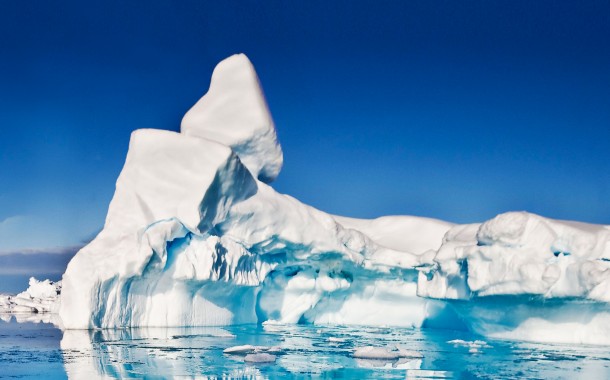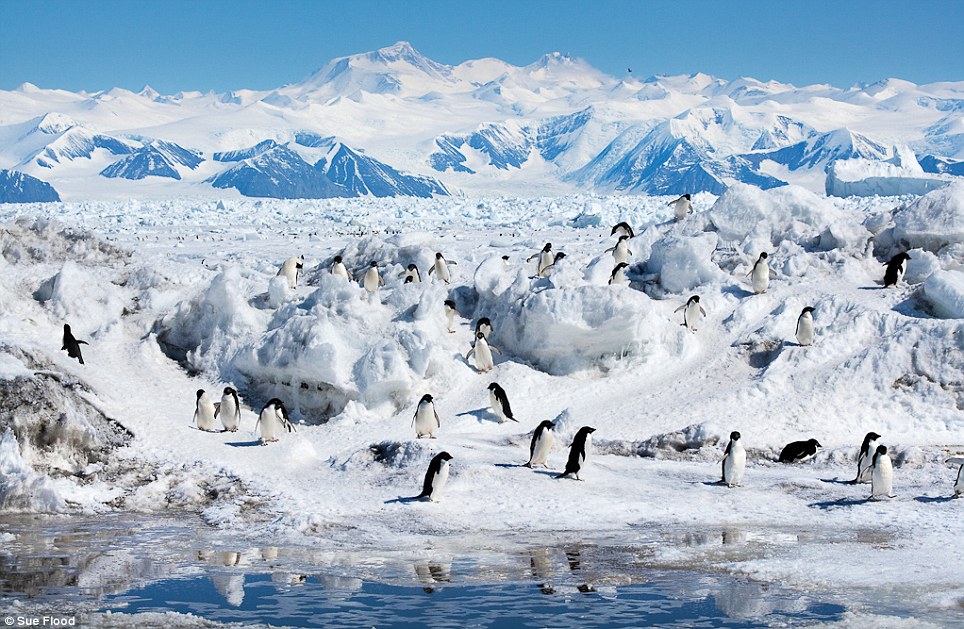Polar region
- Location of the polar regions on Earth
- Polar regions and
- Subpolar areas ( tundra )
Under the polar region is defined as the regions of the earth located between the poles and the associated polar circles. This is also known as the eternal ice, even if that applies to the warmed by the Gulf Stream areas of northern Norway in any way. The Arctic Circle includes the Arctic, in the center of which lies the Arctic Ocean. The southern polar circle includes Antarctica, mainly including the Antarctic continent with.
A special feature of the polar regions are adjacent to the cold climate with lots of snow and ice of up to half a year-long polar day with the midnight sun or the polar night, but the auroras.
Even on Mars, there are ice-covered polar regions.
Air and delimitation
Geometrically, the polar regions of spherical caps with a radius of about 2600 km around the poles. In terms of climate and vegetation, they are mainly polseits the natural tree line. In the outer polar region still tundra vegetation can hold, at high latitudes, however, makes it extremely inhospitable Eisklima plant growth virtually impossible. The animals living here (eg, polar bears ) are therefore entirely dependent on animal food. Likewise, the plankton is of particular importance as the basis of the food chain.
While in the south the boundary of the Arctic region is relatively simple - it includes the Antarctic continent and the surrounding pack ice - the demarcation in the north is much more difficult. The old definition, according to which everything belongs to the Arctic, which lies north of the Arctic Circle, is the climatic conditions along this circle by no means essential, since ocean currents in the areas of the Arctic Ocean have a significant impact on the climate. Thus, the Hudson Bay is frozen half the year in Canada, while the port of Hammerfest ( Norway), more than 1000 kilometers to the north, remains ice-free all year. It has therefore come to be a different definition of the polar climate: The arctic is considered the territory of which the mean temperature does not exceed 10 ° C in the warmest month (July in the northern hemisphere ).
The polar or arctic climate is characterized by long, very cold polar winter, where the sun for days and weeks on end does not rise above the horizon and the soil is deep frozen ( permafrost ); and fog- rich, cool polar summer, when the sun rises over the horizon though, but achieve its rays only in a shallow angle of incidence the surface, so that the soil thaws only superficial. Accordingly, the growing season is very short and the country even where it is not permanently covered by ice, very bald.
With Polar climate is comparable to the high-altitude climate, because here you can find similar conditions, particularly as regards the average temperatures and permafrost.
Life in the extremes
Although the polar regions are hostile to life - what the study of these areas can be despite modern technology at a sometimes risky adventure - there are forms of life both in the polar regions of the northern hemisphere (eg, polar bears ) as well as in those of the southern hemisphere (z. B. penguins, some species of birds, insects, marine marine mammals such as whales and lots of fish ) that are optimally adapted to the difficult living conditions on site.
Relatively few plants manage to survive in the polar climate zone. If the solar radiation and allows the ice to melt, which can occur also in very sheltered places of Antarctica, there occur some species of lichens, grasses (eg Bültgras ) and moss species to light. This is the case particularly on the Antarctic islands and in the southwest of Greenland.
Human settlements can be found in these areas only a few, most are inhabited by Inuit in northern Alaska and Greenland. Alert, Nunavut, located at 82 ° 28 ' north latitude, is the northernmost permanently occupied human settlement on earth. The Antarctic continent itself, except for a few weather and research stations, uninhabited.







.jpg)


